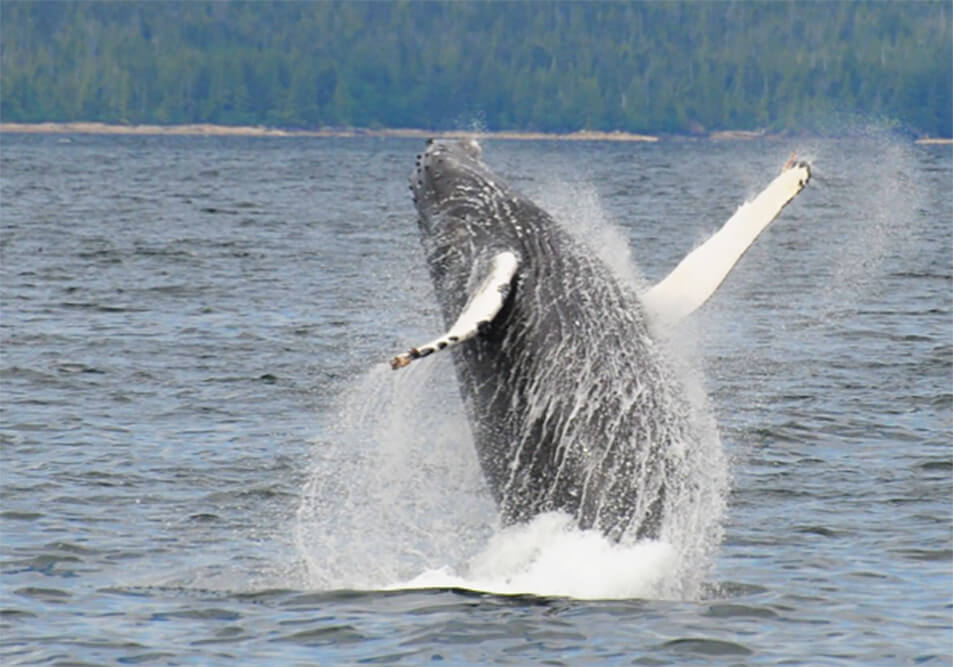
The Misty Plume
Deep in the ocean of Alaska, a humpback whale locates a sufficient concentration of food and lunges towards its prey, consuming huge amounts of fish or krill in one massive mouthful. Humpbacks whales often consume up to 1.5 tons of food a day while feeding around the clock. They stop only for very brief moments of rest before returning to their foraging behavior.
Scientists have long wondered how humpbacks are able to locate their food. In order to begin to find the answer we have to understand what occurs when a humpback whale dives down for a meal. In addition, what we know about other animals can oftentimes be applied and inferred in order to establish a knowledge base.
A humpback whale’s eyes are located such that they are able to see inside their own mouths. They do not possess long distance binocular vision, which makes it unlikely they use eyesight to locate food. Humpbacks and other baleen whales do possess an olfactory bulb- a specific smelling center of the brain that is present in animals that have a more defined sense of smell. Tube-nosed birds such as albatross and shearwaters have the ability to smell the dimethyl sulfide or DMS in waste produced by krill. It is theorized that whales may likewise use their sense of smell in order to find their prey.
Hearing may also be an important sense when it comes to finding prey. The structure of a whale’s ear is very different and their sound range is slightly less than that of a human. When localizing a sound, humans use the time delay from one ear to another and the brain automatically tells us where the sound came from. It is possible that whales are able to do the same. These are a few tools at a humpback whale’s disposal. Perhaps they use a combination of these senses. Then again, maybe they don’t use either. To date, there is no way of knowing for certain.
There are so many unanswered questions regarding humpback whales. If we could only ask them a few simple questions we could understand so much more than we currently do! Much of a humpback’s life occurs at depths that are not sustainable for human life, which furthers the difficulty of drawing conclusions. Perhaps, one day, technology will catch up to our questions. For now, the mystery and intrigue, coupled with their majesty is what keeps us watching whales.
By Simon Hook
Back to All Articles
